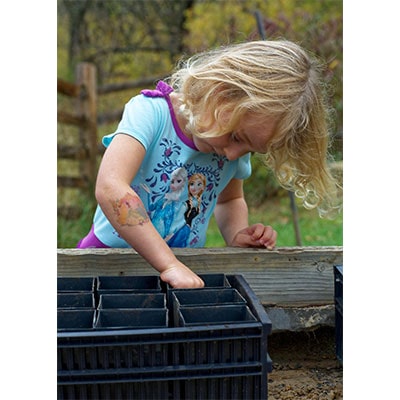
The times when teachers take their class outside are etched in children’s memories. Escaping a hot, stuffy classroom can do wonders for children’s concentration and open-air learning is sure to refresh teachers as well.
Schools are waking up to the idea that gardening is not just a fun way of taking the odd lesson in the summer – it can provide real benefits to children’s educational achievements.
Evidence is mounting that designing, planting and maintaining a school garden can improve science results, social skills, and children’s attitude towards healthy eating.
Like all types of education, outdoor learning is best done to a plan, and school gardening clubs are a great way of making sure that staff and children keep to those plans. Some schools have managed to integrate gardening into their curriculums. So, how is it done?
How to Make a School Garden
If you’re in a hurry to get things started, there are lots of small things that are easy to do and can be done in the space of a lesson. Window boxes can be set up and tended in groups, or you can use tin cans or old welly boots to give children their own planter to be responsible for.
But bigger gardens naturally have a bigger wow factor, and can really galvanise the school community’s love of gardening.
- You’ll need a team, so find a colleague or parent who is a keen gardener.
- Then pick your site. Make sure it gets lots of sun, is near a water source, can be seen from lots of classrooms, and isn’t likely to get damaged by people or animals.
- Test the soil – perhaps as part of a science lesson.
- Plan your garden. Think about having areas for different classes, perhaps in the form of raised beds. Do you have space for a tool shed, greenhouse or compost heap? Then involve the children in picking a theme.
Themed Gardens
There are all sorts of themes that are perfect for schools, with educational slants that will inspire children to learn things they would never take in from a whiteboard. The theme will depend on the age of the children.
For pre-school, nursery and early years, why not set up an ‘A-B-C’ garden, with plants representing every letter of the alphabet: A for asparagus, B for begonias, C for clematis and so on?
For older children, why not design the garden in the shape of a famous piece of art – Van Gogh’s Sunflowers springs to mind? Or try a dinosaur garden with ferns and plants that have survived since the days of Tyrannosaurus Rex?
Other options: a herb garden or a fragrant garden to delight the senses, a butterfly garden, a vegetable patch, a round pizza garden with different slices for different classes, or a garden full of giant plants.
Gardening Clubs and Lessons
Now you have your school garden, it’s time to integrate it into lessons. Science classes are an obvious beneficiary – how much more fun would it be to do plant biology in the school garden, or to look for signs of wildlife and insects?
School gardening clubs are the backbone of a great school garden. Having a classroom of helpers giving up their free time to learn about weeding, watering and pruning is the perfect way to keep the garden looking neat and tidy.
The hard work becomes triflingly easy and the results give children pride and satisfaction as they see the results.
Best of all, they’ll be developing a love for gardening that will stay with them for the rest of their lives. And what could be more rewarding than that?
If you represent a forward-thinking school and are interested in setting up a school garden, Shedstore can supply you with all the equipment required. Click here to view our fantastic range of gardening products.




